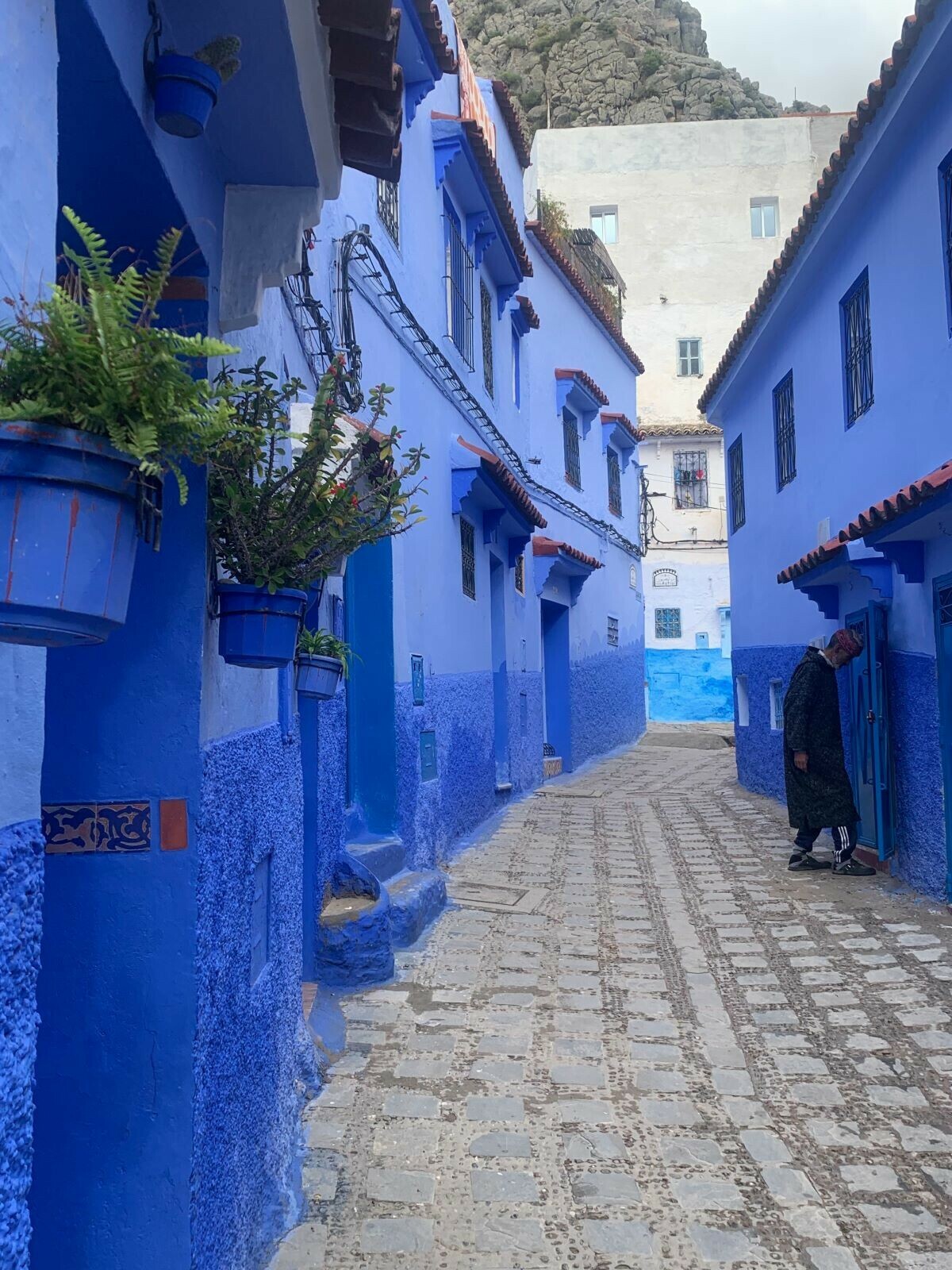Morocco’s blue city of Chefchaouen is more than just an Instagram aesthetic
Walking through Chefchaouen feels like strolling through a movie set. It’s too blue, too perfect, too scenic. When you purposefully get lost because the blue hues from every other lane beckon for a photo, you’re reminded that it’s a real city with inhabitants who may or may not be tired of visitors peeking into alleys and doorways, and taking a picture of every nook and corner.
You’re reminded again that this city was not built as a content source for social media accounts when a kid playing soccer comes into your frame just as you find that perfect symmetry for your shot. Loud conversations drifting into the lanes painted in multiple shades of blue are another call to reality.


I mention these obvious real-life instances because the city is so unrealistically beautiful that you could mistake it for a themed resort.
That’s not to say the beauty of the blues (royal, baby, midnight, sky, azure, ocean, navy, and more) is not intentional. Theories behind the blue spectrum range from keeping mosquitoes away, to Jewish settlers painting the city the colour of the sky and sea, but the most widely accepted and the one shared by the residents was that it was for aesthetic purposes and ultimately, tourism.
And while the Rif Mountains that serve as a picturesque background are God’s gift, the traditional doors and arches, and wrought-iron window grills dotted with colourful plants are all carefully curated design elements.


Historical note: Founded in 1471 by Moulay (an honourific title meaning ‘My Lord’) Alí Ben Rachid at the base of Mount El-Chaouene, it became a refuge for Muslims and Jews expelled from Spain. As it warded off multiple Portuguese invasions, the city remained closed to non-Muslims, but was eventually occupied in 1920 by the Spanish. It was restored to the Moroccan kingdom at the time of its independence in 1956.



Foodie note: Do have the no-holds-barred baguette sandwich from an off-the-map shop. The only clues I can offer you are the name on the board (Chez Fouad), location (near the Kasbah Museum) and clientele (lots of locals queuing up). The sandwich has everything from tuna to salami to rice to vegetables to french fries — all for the price of 10 Moroccan dirhams (Rs270).


Since the whole place is one giant postcard, I didn’t feel the need to visit its few sightseeing spots. Stroll, stop and soak it in. Take pictures, fawn over the many cats, smile at the kids who look at you curiously and of course, eat — and you would have spent your time well in this city. Four hours away from Fez and a little over two hours from Tangier, many recommend it as a day trip. I’d say it deserves at least one night’s stay.


Shopping note: Morocco is a shopping haven, but this blue city isn’t. Either splurge on a beautiful art piece or pick up a small trinket or two; for the haggling and bulk shopping, stick to Fez or Marrakech.


Compared to the neighbouring mystical blue town of Sidi Bou Said in Tunisia, Chefchaouen seemed younger, hip and more upbeat. The last trait, however, could have been owing to the fervour in the air ahead of Morocco’s Fifa qualifying match against Spain that fell exactly on the day we were in the city. They won, we cheered, the city’s medina rang with music.
It was a coincidence — feels more apt to call it a gift — that I could never have anticipated all these years wanting to come to the city known as the blue jewel of North Africa; a chance to witness history, befriend and eventually hug locals as the city erupted with celebrations, and experience such uncontained happiness that one would want to take it back as a souvenir. And while this picture-perfect town cannot compete with the history and design-laden Marrakech and Fez, the enduring memories from this day will set this city apart from every other I have ever visited. Viva Maroc!
Musical note: Since it is perched amidst the Rif Mountains, I leave you with a song in Riffian, a Zenati Berber language spoken in the region, by Moroccan artist Khalid Izri.
This is a 4-part series on the author’s travels to Morocco.
Header Image: A general view of the city of Chefchaouen. — Photo by author







Dear visitor, the comments section is undergoing an overhaul and will return soon.